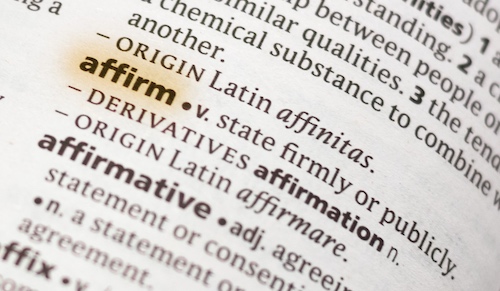“While it is refreshing to see a pro-patentee outcome at the Federal Circuit, the court’s reasoning as to [indefiniteness under Section 112] seems to contradict the purpose of the MPEP’s prohibition against trade names as descriptors of substances and materials.”
 In Eli Lilly & Co. v. Apotex, Inc., decided last week, the Federal Circuit affirmed a district court finding of infringement under the doctrine of equivalents. The patent at issue, U.S. Patent No. 7,772,209 (the ‘209 patent), relates to “a method of administering an antifolate to a mammal.” In addition to an effective amount of the antifolate, the claim recites administering an effective amount of a methylmalonic acid lowering agent. The patent claims cover using Lilly’s ALIMTA®, used to treat mesothelioma and certain types of lung cancer.
In Eli Lilly & Co. v. Apotex, Inc., decided last week, the Federal Circuit affirmed a district court finding of infringement under the doctrine of equivalents. The patent at issue, U.S. Patent No. 7,772,209 (the ‘209 patent), relates to “a method of administering an antifolate to a mammal.” In addition to an effective amount of the antifolate, the claim recites administering an effective amount of a methylmalonic acid lowering agent. The patent claims cover using Lilly’s ALIMTA®, used to treat mesothelioma and certain types of lung cancer.
Procedural History
In January 2005, Lilly canceled its dependent claims that recited the word “ALIMTA” in response to a rejection because referring to a trade name to describe a material or product is improper under 35 U.S.C. 112. It also amended the claims to replace “an antifolate” with “pemetrexed disodium” to overcome rejections under 35 U.S.C. 102 and 103.
After the patent ultimately issued in July 2007, Apotex submitted a New Drug Application with the U.S. Food and Drug Administration (the FDA) seeking to sell a similar product that used a different salt (pemetrexed dipotassium) from Eli Lilly’s patent, and Lilly sued for infringement. While cross-motions between Lilly and Apotex were pending, the Federal Circuit issued Eli Lilly & Co. v. Hospira, Inc., 933 F.3d 1320 (Fed. Cir. 2019). In that case, it affirmed infringement under the doctrine of equivalents of the same claims when several drug companies sought FDA approval to market pemetrexed ditromethamine. In doing so, it found that Lilly’s amendments did not give rise to prosecution history estoppel.
Federal Circuit Analysis
The Federal Circuit began by noting that it reviews de novo whether prosecution history estoppel applied, as it is a matter of law. It then found that the intrinsic record did not support a finding that amending “ALIMTA” to “pemetrexed disodium” was a narrowing amendment (a principal point of argument at the district court). It looked to the Patent Cooperation Treaty application, which stated that “pemetrexed disodium” was ALIMTA. The court observed that the specification never used “ALIMTA” to refer to pemetrexed alone or any other salt form.
Indefiniteness Under Section 112
The Federal Circuit rejected both of Apotex’s arguments. The first was that the examiner’s rejection was partially based on the term “ALIMTA” being indefinite in that it could refer to either “pemetrexed” or “pemetrexed disodium.” The court observed that Apotex incorrectly interpreted the rejection as two separate 112 rejections, indefiniteness and improper use of a trade name. However, the latter is an indefiniteness rejection based on the USPTO’s Manual of Patent Examining Procedure (MPEP) 2173.05(u) (“If the trademark or trade name is used in a claim as a limitation to identify or describe a particular material or product, the claim does not comply with the requirements of the 35 U.S.C. 112, second paragraph.”). While it is refreshing to see a pro-patentee outcome at the Federal Circuit, the court’s reasoning as to this aspect of the opinion seems to contradict the purpose of the MPEP’s prohibition against trade names as descriptors of substances and materials.
Foreign Prosecution History
It also rejected Apotex’s argument that Lilly had amended “ALIMTA” to recite “pemetrexed” in the patent’s European prosecution. The Federal Circuit found that, for one, Apotex had unduly relied on the foreign prosecution, which it had previously warned against in AIA Eng’g Ltd. v. Magotteaux Int’l S/A, 657 F.3d 1264, 1279 (Fed. Cir. 2011). It further found that Apotex had misinterpreted the foreign prosecution history. It noted that, contrary to Apotex’s assertion, Lilly had not equated “ALIMTA” with “pemetrexed” in the European prosecution history. In a somewhat unclear explanation, the Federal Circuit explained that Lilly first attempted to amend its claims to “pemetrexed” instead of “an antifolate.” But the European examiner rejected this argument since Lilly only disclosed pemetrexed disodium in its specification. It found significant that upon the European examiner’s pushback against the original amendment, Lilly replaced every reference of ALIMTA to “pemetrexed disodium” in pages ten et seq of its specification. Based on this shift in Lilly’s strategy from the original amendment, the Federal Circuit did not read Lilly’s initial statement as refocusing the claims in its application to suggest that Lilly had equated “ALIMTA” with “pemetrexed,” despite the original attempt they made to amend the claims.
Light Shed by Precedent
While the Federal Circuit declined to address the issue of tangentiality in this case, its previous decision to uphold a district court’s finding in Eli Lilly & Co. v. Hospira, Inc. and Eli Lilly & Co. v. Dr. Reddy’s Laboratories, Ltd. shed some light on the outcome. The critical takeaway from Hospira is that, going back to the previous discussion about prosecution history, the Section 102 and 103 rejections related to the claim term “antifolate,” not “ALIMTA.” Lilly did not dispute that its amendment was narrowing. Instead, it argued (and the Federal Circuit agreed) that the rationale of its amendment bore “no more than a tangential relation to the equivalent in question” (pemetrexed ditromethamine). And indeed, the original 102 and 103 rejections did not concern narrowing the scope of pemetrexed substances covered by the antifolate. It was about narrowing from antifolate, which was covered by a reference that taught a combination of vitamins that could include folic acid and vitamin B12.
Image Source: Deposit Photos
Author: sharafmaksumov
Image ID: 229492118

![[IPWatchdog Logo]](https://ipwatchdog.com/wp-content/themes/IPWatchdog%20-%202023/assets/images/temp/logo-small@2x.png)

![[Advertisement]](https://ipwatchdog.com/wp-content/uploads/2024/04/Patent-Litigation-Masters-2024-sidebar-early-bird-ends-Apr-21-last-chance-700x500-1.jpg)

![[Advertisement]](https://ipwatchdog.com/wp-content/uploads/2021/12/WEBINAR-336-x-280-px.png)
![[Advertisement]](https://ipwatchdog.com/wp-content/uploads/2021/12/2021-Patent-Practice-on-Demand-recorded-Feb-2021-336-x-280.jpg)
![[Advertisement]](https://ipwatchdog.com/wp-content/uploads/2021/12/Ad-4-The-Invent-Patent-System™.png)







Join the Discussion
No comments yet.